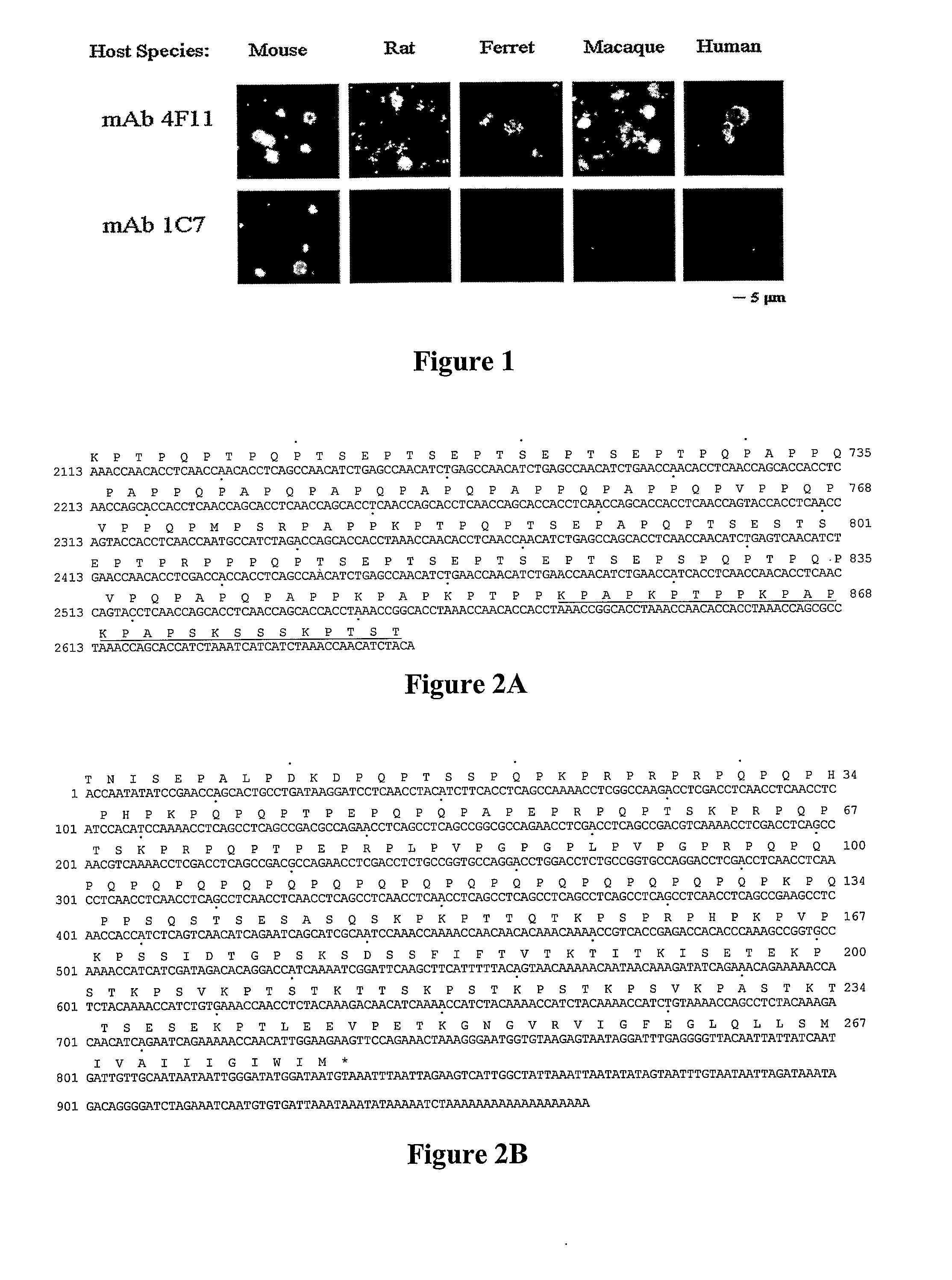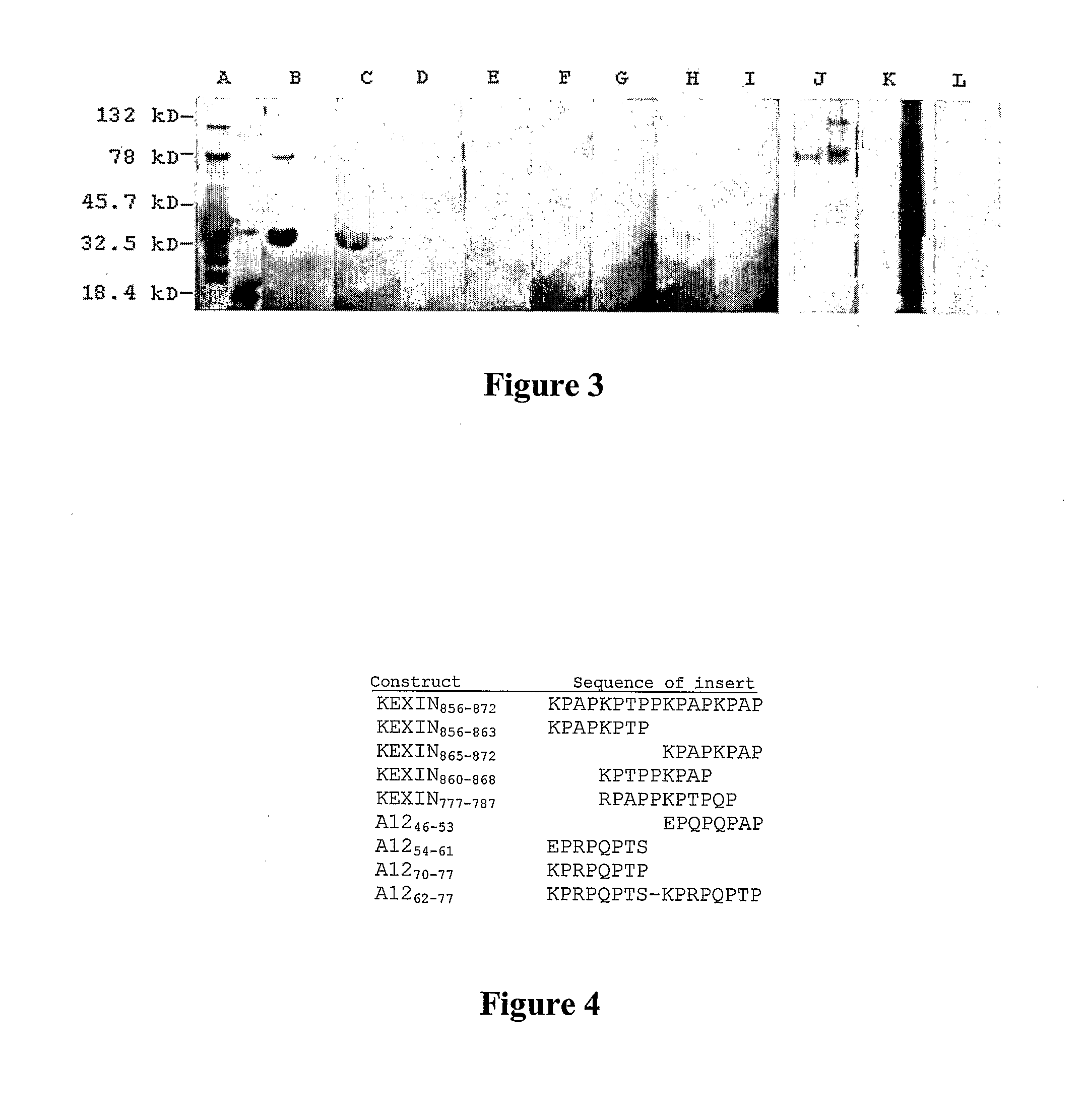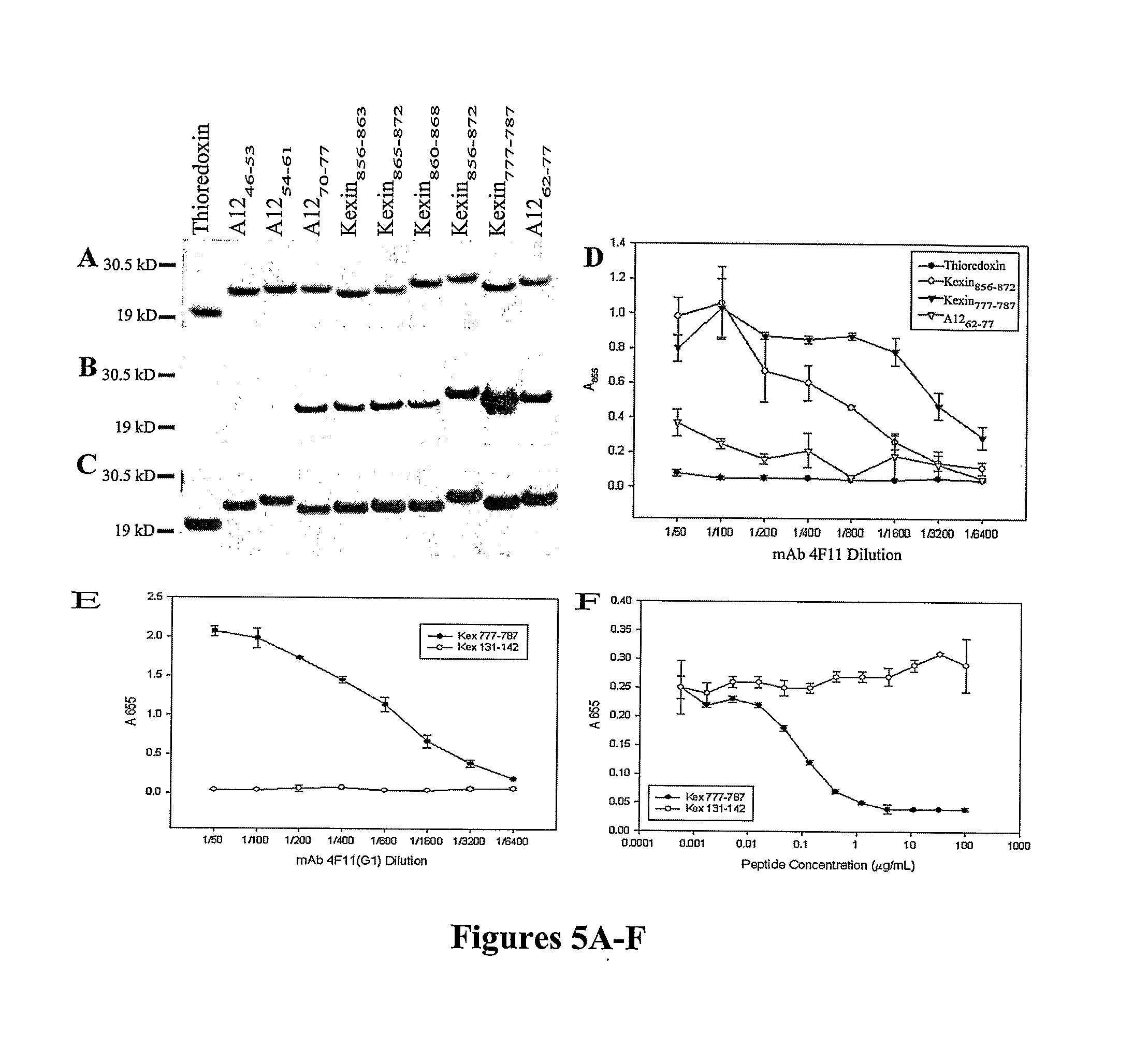Polypeptides And Immunogenic Conjugates Capable of Inducing Antibodies Against Pathogens, and Uses Thereof
a technology of polypeptides and conjugates, which is applied in the field of polypeptides and immunogenic conjugates capable of inducing antibodies against pathogens, can solve the problems that p. carinii cannot be continuously cultured outside of its host, and complicate the ability to use animal derived organisms to immunize humans
- Summary
- Abstract
- Description
- Claims
- Application Information
AI Technical Summary
Benefits of technology
Problems solved by technology
Method used
Image
Examples
example 1
mAb 4F11 Recognizes P. carinii from Different Hosts
[0148]The mAbs 4F11 and 1C7, which were derived from mice immunized with mouse P. carinii, were used as probes against P. carinii isolates derived from mice, rats, ferrets, Rhesus macaques, and humans (also termed P. jiroveci). As shown in FIG. 1, mAb 4F11 recognized antigens on the surface of P. carinii derived from all five host species. However, the isotype-matched mAb, 1C7, was only capable of recognizing mouse P. carinii, the organism used as the immunogen, a characteristic of most anti-P. carinii antibodies (Gigliofti et al., “Pneumocystis carinii Host Origin Defines the Antibody Specificity and Protective Response Induced by Immunization,”J. Infect. Dis. 176:1322-1326 (1997), which is hereby incorporated by reference in its entirety). The pattern and intensity of fluorescent staining suggests that the epitope recognized by mAb 4F11 is abundant on the surface of P. carinii cysts, and possibly on the trophic form of the organis...
example 2
Identification of Mouse P. carinii Kex1 Epitope Recognized by mAb 4F11
[0149]A cDNA clone (A32) encoding the C-terminal 200 amino acid residues of P. carinii Kex1 (Lee et al., “Molecular Characterization of KEX1, a Kexin-Like Protease in Mouse Pneumocystis carinii,” Gene 242:141-150 (2000), which is hereby incorporated by reference in its entirety) was used to construct a shotgun cleavage library in E. coli; colony immunoscreening was performed with mAb 4F11. Positive clones were confirmed by Western blotting. Inserts from the plasmids of three positive clones were sequenced and shown to contain the 27 amino acid region underlined in FIG. 2A. The epitope mapped to the junction of the proline-rich domain and serine / threonine rich domain of the kexin molecule. To further delineate the epitope, two fusion proteins were analyzed, one containing the first 17 amino acids (Pro-rich domain residues 856-872) and the other the last 10 amino acids (Ser / Thr-rich domain residues 873-882) of the 2...
example 3
Identification of Additional Mouse P. carinii Protein Recognized by mAb 4F11
[0150]In Western blots of P. carinii-infected mouse lung homogenates, several bands are detected by mAb 4F11 (Gigliotti et al., “Passive Intranasal Monoclonal Antibody Prophylaxis Against Murine Pneumocystis carinii Pneumonia,”Infect. Immun. 70:1069-1074 (2002), which is hereby incorporated by reference in its entirety). A previous immunoscreen of a mouse P. carinii cDNA expression library in λgt11 identified multiple clones containing inserts that encode proteins recognized by mAb 4F11. The primary structure of clone A12 is distinct from mouse P. carinii Kex1 and encodes a 278 amino acid polypeptide that is rich in proline residues. Clone A12 appears to encode the C-terminal portion (SEQ ID NO: 5) of its respective protein based on the presence of a stop codon and poly-A tail in the nucleotide sequence of the cDNA (FIG. 2B). Outside of the proline-rich region, there is no significant homology between the A1...
PUM
| Property | Measurement | Unit |
|---|---|---|
| temperature | aaaaa | aaaaa |
| concentration | aaaaa | aaaaa |
| length | aaaaa | aaaaa |
Abstract
Description
Claims
Application Information
 Login to View More
Login to View More - R&D
- Intellectual Property
- Life Sciences
- Materials
- Tech Scout
- Unparalleled Data Quality
- Higher Quality Content
- 60% Fewer Hallucinations
Browse by: Latest US Patents, China's latest patents, Technical Efficacy Thesaurus, Application Domain, Technology Topic, Popular Technical Reports.
© 2025 PatSnap. All rights reserved.Legal|Privacy policy|Modern Slavery Act Transparency Statement|Sitemap|About US| Contact US: help@patsnap.com



